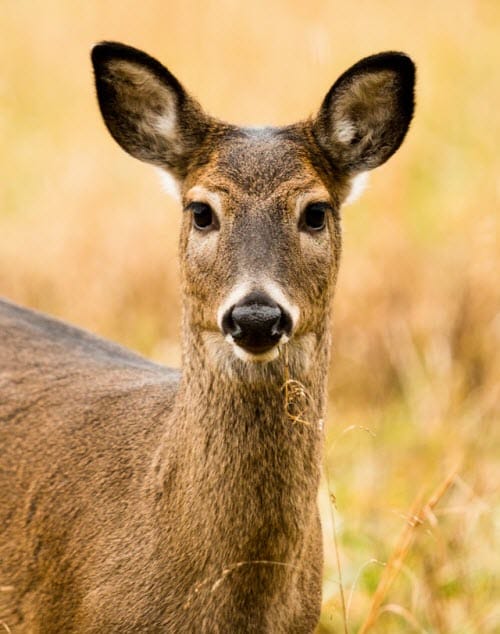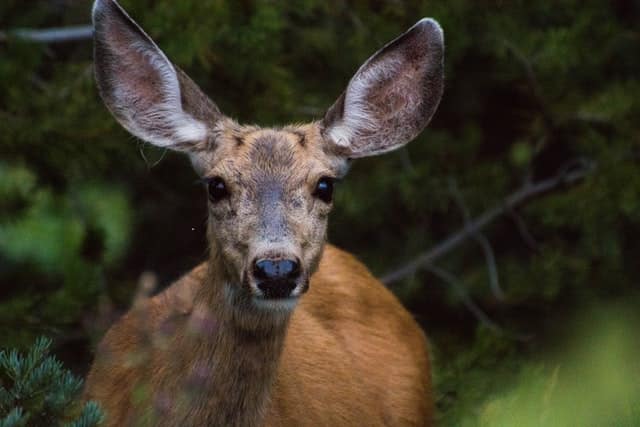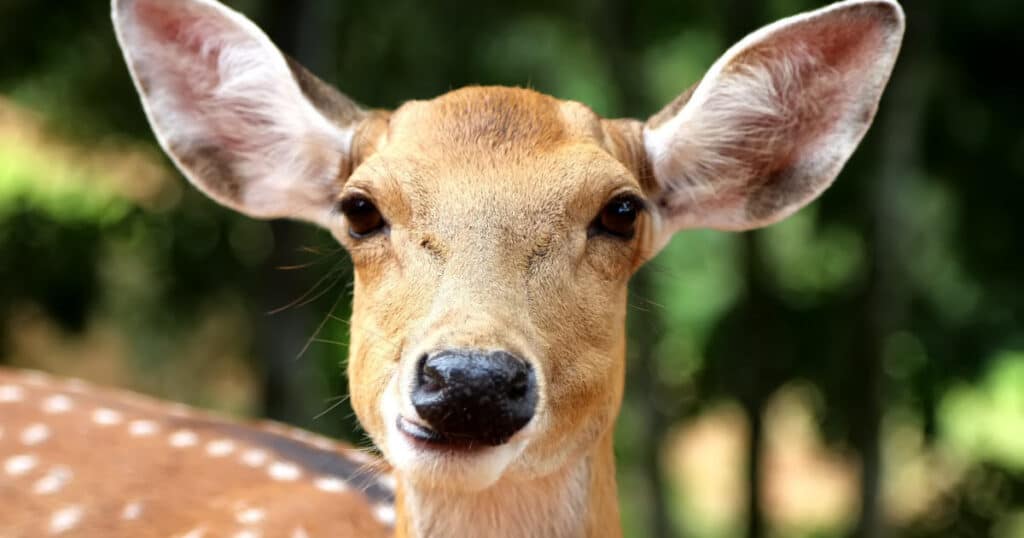Most people have a cat or a dog and are used to their pet staring at them for different things. Cats and dogs have several reasons for staring, including dominance plays, all out aggression, or simply being interested in what you’re doing or trying to get your attention. But, what does it it mean when a deer stares at you?
Well, like other animals, deer have several reasons for staring at people.
One thing that should be made clear starting off is a deer will have vastly different reasons for staring at a person than they would another deer of their species. A big part of understanding what it means when deer stare at you involves also understanding general deer body language.
The reasons for a deer staring at you vary depending on situation and location.
In this article, we will discuss those various scenarios and explain some other classic body language traits of a deer species such as white tailed deer.
So, What Does it Mean When a Deer Stares at You?
Deer fix their eyes so they can track the exact movements of a potential predator. This behavior is not reserved for humans. In fact, it is more for traditional predators such as wolves.

Bobbing the head is a ploy to see the object it is staring at from as many angles as possible. Stomping their feet is one of the noises deers can make that serves to warn other deer in the area.
This means whenever something attracts the attention of a deer, the animal will fix its gaze upon that object.
Deer are Prey Animals
It is rare for a deer to stare directly at you, though some observers may be familiar with this situation. The deer is looking directly at you with its ears forward, bobbing its head slightly. This suggests the deer is in a state of high alert. It may also stamp its front feet against the ground.
There are several reasons why this may happen, but two things are consistently true:
- The deer has now seen you.
- It is alert and feels threatened.
Needless to say, this is unwelcome news for hunters because it mostly means the game is up and the hunt of that animal is over.
You have been busted.
The deer is on alert, ready to spring into action and flee with even the slightest threat.
Deer Will Also Casually Stare at You
If the deer stares at you casually, there could be several reasons. Perhaps the animal is not displaying the usual body language that shows alertness. If that is the case then it there’s no additional reason why the deer stares other than just looking at you.
A lot can be said for curiosity and animals definitely have an inquisitive nature. If you are doing something at a distance from a deer, it may be looking at you wondering what you’re doing.
The deer is not especially worried or afraid, but merely checking out the strange two-legged animal in their location.

Sometimes a deer will stare and fix its eyes on a person or object to decide what to do. In other words, the deer wants to know how to react to you. Are you posing a threat? Should the deer run? A lot of times a stare will mean a deer is deciding what to do in any given situation.
This is especially common when you see a deer in your garden. You may be behind a glass door and not posing a risk, but the deer does not know your intentions. The animal will be checking you out to see if you are a predator or not. Sometimes, if you wait long enough you may see the deer break your stare and go back to what it was doing before, likely eating.
Movement is Important
A big part of deer vision is based on movement. When a deer is staring at you, it is also assessing your general movements. If you make a rapid movement the deer is likely to flee unless it feels you are far enough away to pose no risk.
If you are a hunter, when a deer stares at you, the game is up, and the deer knows you are there. However, sometimes if you freeze quick enough the deer may only be looking in your general location and for movements. Of course, deer employ other tools to find threats. Their sense of smell indicates threats as well, so freezing may not guarantee success.
Why Deer Freeze in Your Headlights
Anybody who has the misfortune of hitting a deer with their vehicle will tell you deer stare down the lights of an approaching car. Deer can become fixated on the light instead of running away as if they are accepting their fate.
They do this because deer are crepuscular animals, meaning they are most active in the twilight hours of dusk and dawn. This occurs an hour either side of both sunset and sunrise. Deer’s vision is adapted to function in low light conditions.
A headlight beam from a car is the opposite of low light. Bright lights shine directly into the deer’s face, making their eyes fully dilated.
A deer’s eyes are designed to capture as much light as possible to accommodate twilight conditions. There is no on/off switch to this. When the headlight reaches their eyes it still takes in as much light as possible.
In these situations, it is too much light and the deer is essentially blinded by the light. Until the eye can adjust, the deer will freeze instead of risking movement and injury. This state of shock and disorientation is where the phrase “like a deer in headlights” comes from.
Unfortunately, deer freezing often means they will be hit by the oncoming vehicle.


